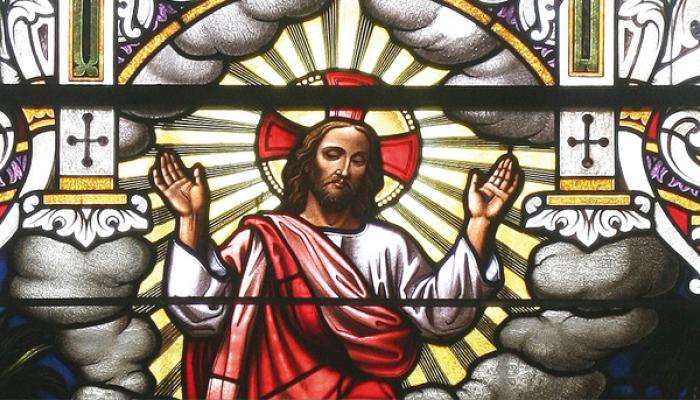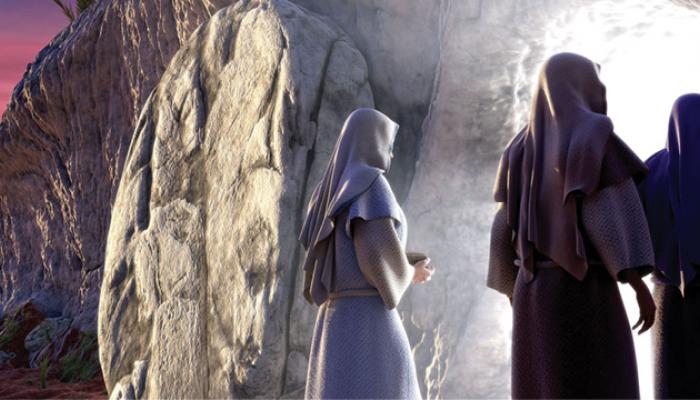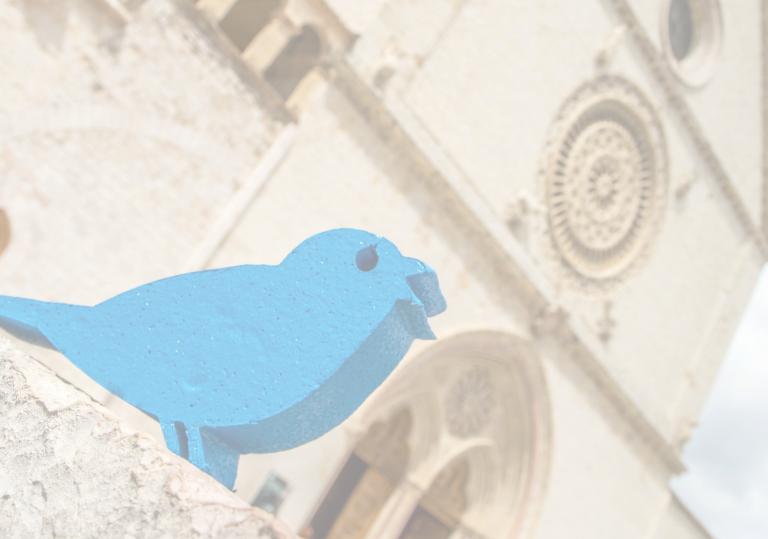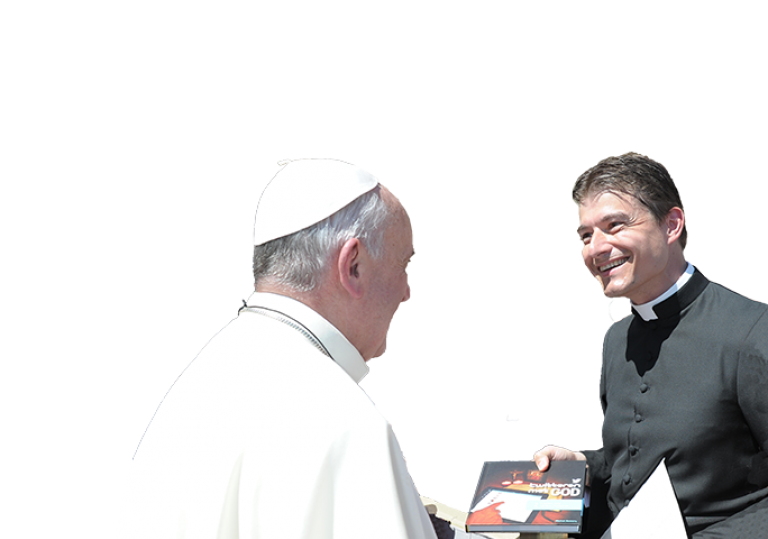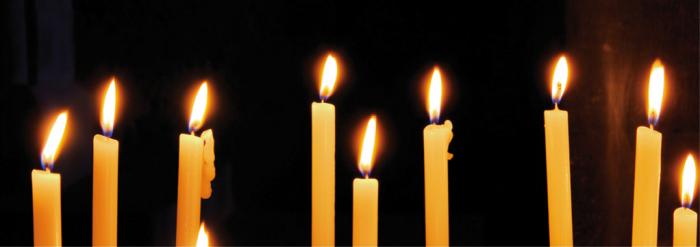
3.32 Що відбувається під час Великодньої Вігілії?
Великднє чування є найсвітлішою подією церковного року. Усе, що Ісус говорив і робив, набуває значення лише через Його воскресіння. Запалення великодньої свічки в темній церкві символізує Ісуса, наше єдине Світло. Це світло передається від однієї людини до іншої, оскільки запалюються свічки всіх вірних і вся церква освітлюється світлом свічок.
Ми багато читаємо з Біблії і чуємо про стосунки між Богом і Його народом. Люди часто хрестяться під час Вігілії, і всі вірні відновлюють свої обітниці хрещення. Тоді Євхаристія відправляється з великою радістю через все, що дав нам Ісус.
What is the work of Christ in the liturgy?
In the liturgy of the Church, it is his own paschal mystery that Christ signifies and makes present. By giving the Holy Spirit to his apostles he entrusted to them and their successors the power to make present the work of salvation through the Eucharistic sacrifice and the sacraments, in which he himself acts to communicate his grace to the faithful of all times and places throughout the world. [CCCC 222]
What is the essence of every liturgy?
Liturgy is always in the first place communion or fellowship with Jesus Christ. Every liturgy, not just the celebration of the Eucharist, is an Easter in miniature. Jesus reveals his passage from death to life and celebrates it with us.
The most important liturgy in the world was the Paschal liturgy that Jesus celebrated with his disciples in the Upper Room on the night before his death. The disciples thought that Jesus would be commemorating the liberation of Israel from Egypt. Instead, Jesus celebrated the liberation of all mankind from the power of death. Back in Egypt it was the “blood of the lamb” that preserved the Israelites from the angel of death. Now he himself would be the Lamb whose blood saves mankind from death. For Jesus’ death and Resurrection is the proof that someone can die and nevertheless gain life. This is the genuine substance of every Christian liturgy. Jesus himself compared his death and Resurrection with Israel’s liberation from slavery in Egypt. Therefore, the redemptive effect of Jesus’ death and Resurrection is called the Paschal mystery. There is an analogy between the life-saving blood of the lamb at the Exodus of the Israelites from Egypt (Ex 12) and Jesus, the true Paschal Lamb that has redeemed mankind from the bondage of death and sin. [Youcat 171]
What are the signs that bear witness to the Resurrection of Jesus?
Along with the essential sign of the empty tomb, the Resurrection of Jesus is witnessed to by the women who first encountered Christ and proclaimed him to the apostles. Jesus then “appeared to Cephas (Peter) and then to the Twelve. Following that he appeared to more than five hundred of the brethren at one time” (1 Corinthians 15:5-6) and to others as well. The apostles could not have invented the story of the resurrection since it seemed impossible to them. As a matter of fact, Jesus himself upbraided them for their unbelief. [CCCC 127]
Why is the Resurrection at the same time a transcendent occurrence?
While being an historical event, verifiable and attested by signs and testimonies, the Resurrection, insofar as it is the entrance of Christ's humanity into the glory of God, transcends and surpasses history as a mystery of faith. For this reason the risen Christ did not manifest himself to the world but to his disciples, making them his witnesses to the people. [CCCC 128]
How did the disciples come to believe that Jesus is risen?
The disciples, who before had lost all hope, came to believe in Jesus’ Resurrection because they saw him in a different way after his death, spoke with him, and experienced him as being alive.
The Easter events that took place in Jerusalem in the year 30 are not a made-up story. Following the death of Jesus and the defeat of their whole cause, the disciples fled (“We had hoped that he was the one to redeem Israel”, Lk 24:21) or else barricaded themselves behind locked doors. Only their encounter with the risen Christ freed them from their paralysis and filled them with an enthusiastic faith in Jesus Christ, the Lord of life and death. [Youcat 105]
Are there proofs for the Resurrection of Jesus?
There are no proofs for the Resurrection of Jesus in the scientific sense. There are, however, very strong individual and collective testimonies by a large number of contemporaries of those events in Jerusalem.
The oldest written testimony to the Resurrection is a letter that St. Paul wrote to the Corinthians around twenty years after Christ’s death: “For I delivered to you as of first importance what I also received, that Christ died for our sins in accordance with the Scriptures, that he was buried, that he was raised on the third day in accordance with the Scriptures, and that he appeared to Cephas, then to the Twelve. Then he appeared to more than five hundred brethren at one time, most of whom are still alive, though some have fallen asleep” (1 Cor 15:3–6). Paul is recording here a living tradition that was present in the original Christian community two or three years after Jesus’ death and Resurrection, when he himself became a Christian—on the basis of his own staggering encounter with the risen Lord. The disciples took the fact of the empty tomb (Lk 24:2–3) as the first indication of the reality of the Resurrection. Women, of all people, discovered it—according to the law of that time they were not able to testify. Although we read about the apostle John that he “saw and believed” (Jn 20:8b) already at the empty tomb, full assurance that Jesus was alive came about only after a series of appearances. The many encounters with the risen Lord ended with Christ’s Ascension into heaven. Nevertheless, there were afterward and there are even today encounters with the living Lord: Jesus Christ lives. [Youcat 106]
У літургійному звершенні Великодньої Вігілії використовуються два красномовні знаки. Спочатку є вогонь, який стає світлом. Коли процесія проходить крізь церкву, оповита темрявою ночі, світло Пасхальної свічки стає хвилею вогнів і говорить нам про Христа як правдиву ранкову зірку, яка ніколи не заходить – Воскреслого Господа, в якому світло перемогло темряву. Другий знак – вода. З одного боку, вона нагадує про води Червоного моря, занепад і смерть, таємницю Хреста. Але тепер вона представлена нам як джерельна вода, життєдайна стихія серед пустелі. Таким чином вона стає образом Таїнства Хрещення, через яке ми стаємо учасниками смерті та воскресіння Ісуса Христа. [Папа Бенедикт, Великоднє чування, 23 квітня 2011 р.]

